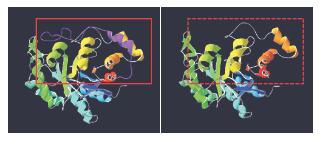Congenital bile acid synthesis defect type 2 (CBAS2) is an autosomal recessive disorder caused by biallelic mutations of AKR1D1 gene, which encodes the Δ4-3-oxo-steroid 5β-reductase. Cholestatic jaundice is the main clinical manifestation, accompanied by malabsorption of fat and fat-soluble vitamins. This paper reported the clinical and genetic features of a CBAS2 patient definitely diagnosed by AKR1D1 genetic analysis. An 8-monthold male infant was referred to the hospital with the complaint of jaundiced skin and sclera over 7 months. On physical examination, growth retardation and malnutrition were discovered besides mild jaundice of the skin and sclera. The liver was palpable 8 cm below the right subcostal margin with medium texture, and the spleen was not enlarged. On liver function test, elevated levels of bilirubin (predominantly conjugated bilirubin) and transaminases were detected, but serum total bile acids and γ-glutamyl transpeptidase levels were within the normal ranges. Liver histopathologic analysis showed disorganized bile ducts, obvious multinucleated giant cells, significant cholestasis in hepatocytes, together with portal and interstitial fibrosis and lymphocytic infiltration. Via next generation sequencing analysis and Sanger sequencing confirmation, the infant proved to be a compound heterozygote of the AKR1D1 variants c.579+2delT and c.853C > T(p.Q285X), two novel mutations originated from his mother and father, respectively. CBAS2 was thus definitely diagnosed, and chenodeoxycholic acid was given orally. As a result, the abnormal liver function and hepatomegaly were improved gradually. On a follow-up 3 months later, a soft liver was palpable 2.5 cm below the right subcostal margin, and all liver function indices recovered to normal ranges.
Key words
Congenital bile acid synthesis defect type 2 /
AKR1D1 gene /
Mutation /
Child
{{custom_sec.title}}
{{custom_sec.title}}
{{custom_sec.content}}
References
[1] Clayton PT. Disorders of bile acid synthesis[J]. J Inherit Metab Dis, 2011, 34(3):593-604.
[2] Kondo KH, Kai MH, Setoguchi Y, et al. Cloning and expression of cDNA of human delta 4-3-oxosteroid 5 beta-reductase and substrate specifcity of the expressed enzyme[J]. Eur J Biochem, 1994, 219(1-2):357-363.
[3] Charbonneau A, The VL. Genomic organization of a human 5beta-reductase and its pseudogene and substrate selectivity of the expressed enzyme[J]. Biochim Biophys Acta, 2001, 1517(2):228-235.
[4] Di Costanzo L, Drury JE, Christianson DW, et al. Structure and catalytic mechanism of human steroid 5beta-reductase (AKR1D1)[J]. Mol Cell Endocrinol, 2009, 301(1-2):191-198.
[5] Lemonde HA, Custard EJ, Bouquet J, et al. Mutations in SRD5B1(AKR1D1), the gene encoding delta(4)-3-oxosteroid 5beta-reductase, in hepatitis and liver failure in infancy[J]. Gut, 2003, 52(10):1494-1499.
[6] Gonzales E, Cresteil D, Baussan C, et al. SRD5B1(AKR1D1) gene analysis in delta(4)-3-oxosteroid 5beta-reductase deficiency:evidence for primary genetic defect[J]. J Hepatol, 2004, 40(4):716-718.
[7] Ueki I, Kimura A, Chen HL, et al. SRD5B1 gene analysis needed for the accurate diagnosis of primary 3-oxo-Delta4-steroid 5beta-reductase defciency[J]. J Gastroenterol Hepatol, 2009, 24(5):776-785.
[8] Seki Y, Mizuochi T, Kimura A, et al. Two neonatal cholestasis patients with mutations in the SRD5B1(AKR1D1) gene:diagnosis and bile acid profiles during chenodeoxycholic acid treatment[J]. J Inherit Metab Dis, 2013, 36(3):565-573.
[9] Morgan NV, Hartley JL, Setchell KD, et al. A combination of mutations in AKR1D1 and SKIV2L in a family with severe infantile liver disease[J]. Orphanet J Rare Dis, 2013, 8:74.
[10] Zhao J, Fang LJ, Setchell KD, et al. Primary Δ4-3-oxosteroid 5β-reductase deficiency:two cases in China[J]. World J Gastroenterol, 2012, 18(47):7113-7117.
[11] 方玲娟, 王建设. 先天性胆汁酸合成障碍与胆汁淤积性肝病[J]. 临床肝胆病杂志, 2010, 26(6):585-588.
[12] 代东伶. 先天性胆汁酸合成障碍[J]. 临床儿科杂志, 2015, 33(4):301-305.
[13] 胡长霞, 黄志华. 先天性胆汁酸合成障碍的诊治[J]. 中国临床医生, 2012, 40(11):13-15.
[14] den Dunnen JT, Antonarakis SE. Mutation nomenclature extensions and suggestions to describe complex mutations:a discussion[J]. Hum Mutat, 2000, 15(1):7-12.
[15] den Dunnen JT, Antonarakis SE. Nomenclature for the description of human sequence variations[J]. Hum Genet, 2001, 109(1):121-124.
[16] Setchell KD, Suchy FJ, Welsh MB, et al. Delta 4-3-oxosteroid 5 beta-reductase deficiency described in identical twins with neonatal hepatitis. A new inborn error in bile acid synthesis[J]. J Clin Invest, 1988, 82(6):2148-2157.
[17] Clayton PT, Patel E, Lawson AM, et al. 3-oxo-delta 4 bile acids in liver disease[J]. Lancet, 1988, 1(8597):1283-1284.
[18] Shneider BL, Setchell KD, Whitington PF, et al. Delta 4-3-oxosteroid 5 beta-reductase deficiency causing neonatal liver failure and hemochromatosis[J]. J Pediatr, 1994, 124(2):234-238.
[19] Siafakas CG, Jonas MM, Perez-Atayde AR. Abnormal bile acid metabolism and neonatal hemochromatosis:a subset with poor prognosis[J]. J Pediatr Gastroenterol Nutr, 1997, 25(3):321-326.
[20] Yanagi T, Mizuochi T, Homma K, et al. Distinguishing primary from secondary Δ(4)-3-oxosteroid 5β-reductase (SRD5B1, AKR1D1) deficiency by urinary steroid analysis[J]. Clin Endocrinol (Oxf), 2015, 82(3):346-351.
[21] Russell DW, Setchell KD. Bile acid biosynthesis[J]. Biochemistry, 1992, 31(20):4737-4749.
[22] Rižner TL, Penning TM. Role of aldo-keto reductase family 1(AKR1) enzymes in human steroid metabolism[J]. Steroids, 2014, 79:49-63.
[23] Gonzales E, Gerhardt MF, Fabre M, et al. Oral cholic acid for hereditary defects of primary bile acid synthesis:a safe and effective long-term therapy[J]. Gastroenterology, 2009, 137(4):1310-1320.e1-3.
 PDF(2956 KB)
PDF(2956 KB)


 PDF(2956 KB)
PDF(2956 KB)
 PDF(2956 KB)
PDF(2956 KB)
